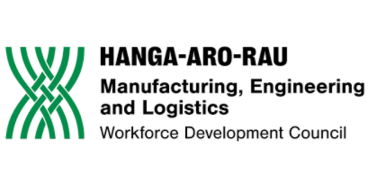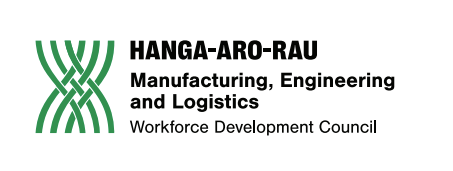
Making a difference for manufacturing
In August 2023, Buckley Systems Chief People Officer, Dion Orbell, and Plastics New Zealand CEO, Rachel Barker, were appointed as the first co-chairs of the Hanga-Aro-Rau Manufacturing National Industry Advisory Group (NIAG). Collectively, they are excited to leverage their new roles to grow the sector, provide robust feedback channels, and create better opportunities for their kaimahi.
“Through the Manufacturing NIAG, it really does feel that industry has a voice in a way that it didn’t before,” Dion says, “and that there’s a two-way conversation happening now that is being facilitated by Hanga-Aro-Rau. As Co-chairs, our goal is to ensure that industry is heard and that they are being given opportunities to feed back into the systems where the funding sits.”
“We’ve had two NIAG meetings so far and everyone has come away feeling energised and enthusiastic about vocational education,” Rachel says. “We are learning from each other and using that forum as a means to explore opportunities for further training and funding across the sector.”
that the previous Industry Training Organisation (ITO) vocational education model could sometimes feel quite siloed. “Everything I did was related specifically to print,” she says. “Now, with the support of Hanga-Aro-Rau and through my roles in both the NIAG and the Industry Stakeholder Group (ISG), I am able to engage with a number of other industries and find commonalities. We’re all now working at a higher level with a broader cross-section of collaborators to have a much bigger impact.
“Through the combination of these roles, I’m in a unique position to have really good oversight of the work that Hanga-Aro-Rau is doing,” Ruth adds. “There’s a lot of proactive, day-to-day work taking place across a number of industries, many of whom have never been engaged with before. Manufacturing plays a huge role in our economy and Hanga-Aro-Rau is facilitating people getting into those careers and working their way up through systems with a coordinated education approach.”
Rachel and Dion agree that the manufacturing sector needs to be both better heard and better understood; they see the NIAG as a critical channel to achieve this. “Manufacturing contributes about $24 billion or 10 percent – 30 per cent of New Zealand’s Gross Domestic Product, with almost a quarter of a million people employed,”* Dion says., “so we should have a lot of input into how vocational education is being delivered. Through the NIAG, we are able to examine qualifications and micro-credentials and agree on the ones that best align with industry need.”
“The NIAG is also instrumental in changing historical perceptions around the industry,” Rachel says. “Young people sometimes see manufacturing as old-fashioned rather than high-tech, but none of that technology exists without manufacturing. The NIAG provides a good opportunity to shift that perspective.
“Hanga-Aro-Rau is the bit that’s listening to industry. We know that we can call their team with any challenge or question – even if it’s related to another collaborator like Te Pūkenga or one of the other Workforce Development Councils – and they will find the answer. They’re proactively helping us to resolve issues, which makes them a powerful piece of the system.”
“It feels like feedback channels are more formalised now,” Dion says. “The NIAG effectively promotes industry into rooms where funding decisions are being made, enabling us to centre both providers and learners in those discussions. By bringing in that true industry voice, we can ensure that training and opportunities align.”
